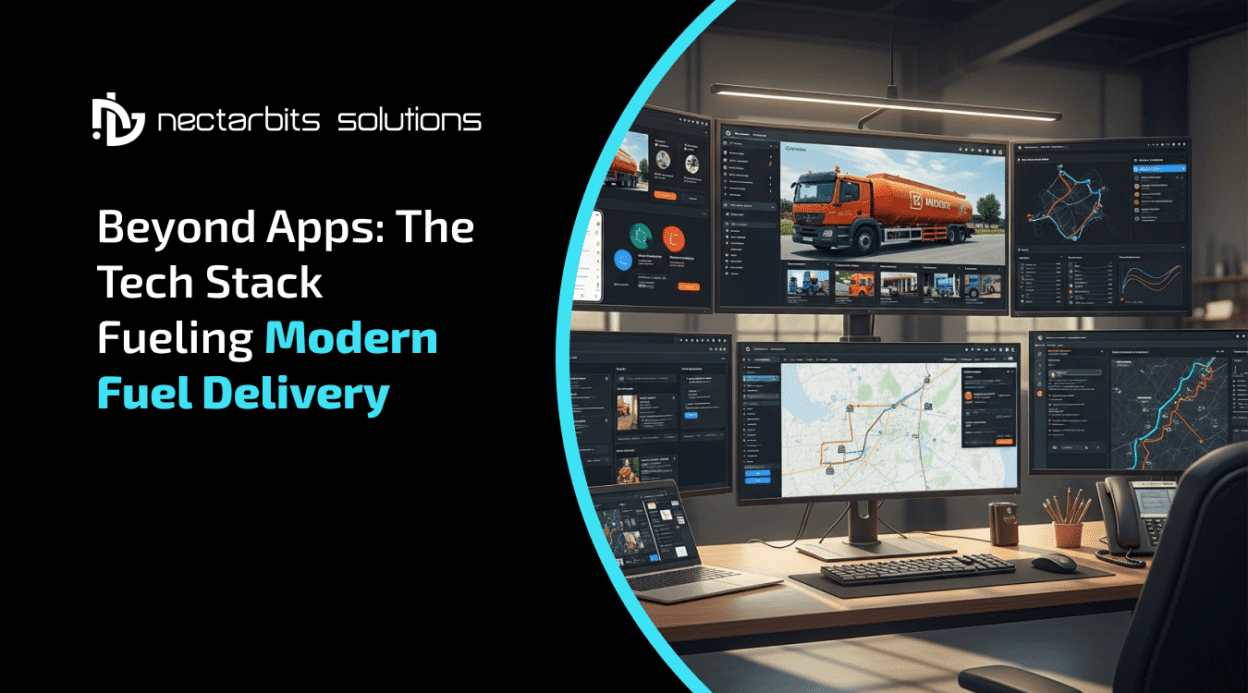The App is Just the Tip of the Iceberg
In the booming on-demand economy, the sleek, user-friendly fuel delivery app gets all the attention. It’s the digital storefront, the first point of contact, and the face of your brand. But to believe the app is the entire business is like believing the tip of an iceberg is the whole mountain of ice. The real power, the operational muscle, and the competitive advantage lie beneath the surface, in a complex and deeply integrated fuel delivery technology stack.
While startups and established players alike focus on user acquisition through a slick UI, the businesses that truly succeed and scale are the ones that master the back-end. They understand that operational inefficiency is a silent profit killer. Missed delivery windows, unoptimized routes, manual dispatching, and inaccurate inventory tracking don’t just frustrate customers—they cripple your bottom line.
This article goes beyond the app. We will deconstruct the complete fuel delivery software ecosystem, from the customer-facing interface to the unseen operational technology that powers a modern, profitable fuel delivery enterprise.
Why a Holistic Tech Stack Matters More Than Ever
The on-demand fuel delivery market is not just growing; it’s exploding. The global market was valued at over USD 6.33 billion in 2022 and is projected to skyrocket, driven by convenience, B2B fleet needs, and evolving consumer habits. [Source: Precedence Research]. This rapid expansion brings immense opportunity, but it also magnifies the challenges:
- Razor-Thin Margins: Fuel prices fluctuate, and competition is fierce. Every penny saved on operational costs directly impacts profitability.
- Logistical Nightmares: Coordinating a fleet of hazmat-certified trucks, optimizing multi-stop routes in real-time, and accounting for traffic and weather is a monumental task.
- Safety & Compliance: The fuel industry is heavily regulated. Manual tracking of safety checks, certifications, and delivery protocols is a recipe for costly errors and legal risks.
- Customer Expectations: Today’s customers, whether individual car owners or large fleet managers, expect Amazon-level service: real-time tracking, accurate ETAs, and seamless communication.
A disjointed system—where the customer app doesn’t talk to the dispatch software, and the driver’s manifest is a static PDF—simply cannot handle this complexity. It’s this disconnect that a holistic tech stack is designed to solve.
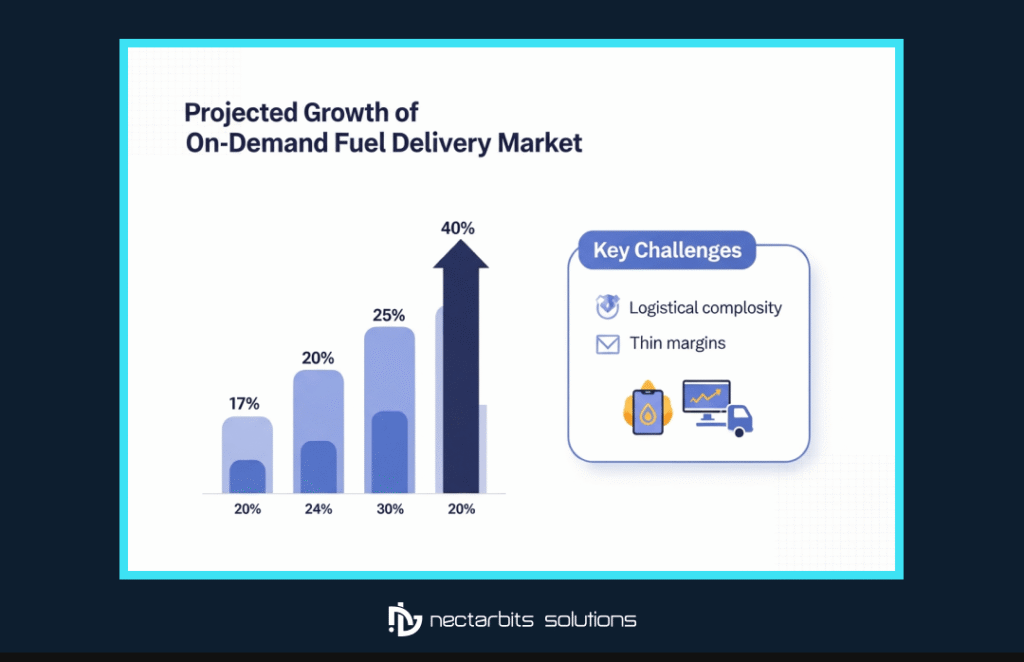
Deconstructing the Modern Fuel Delivery Technology Stack
A robust tech stack isn’t a single piece of software; it’s a layered ecosystem where each component communicates seamlessly with the others. Think of it as a central nervous system for your entire operation.
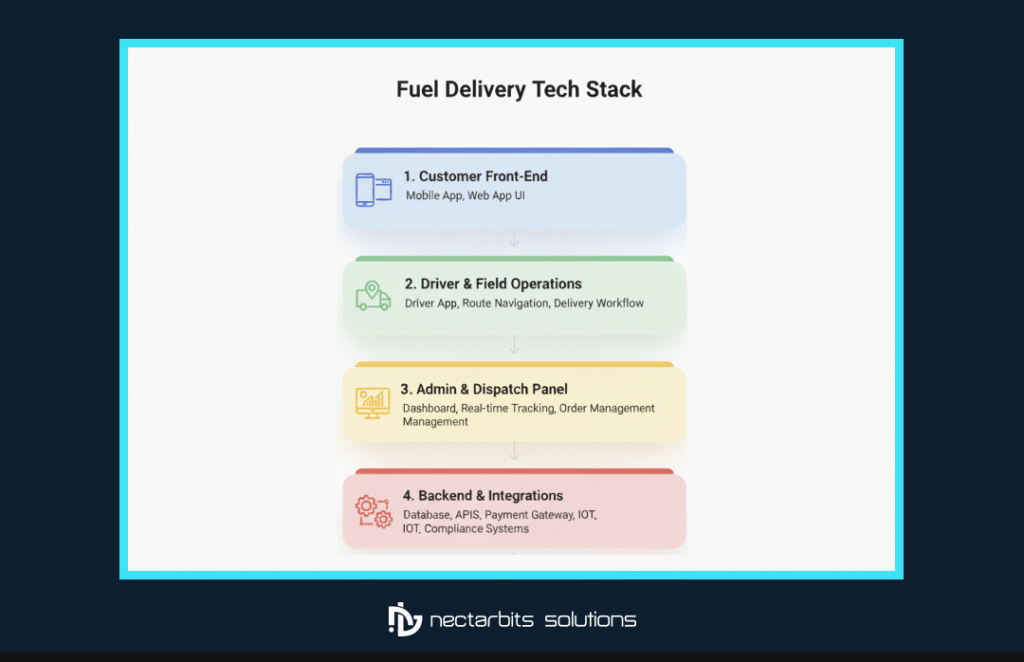
Layer 1: The Customer Experience Front-End
This is the “tip of the iceberg” we mentioned, but it’s critically important. It’s your brand’s handshake with the customer.
Key Features:
- Intuitive Ordering: Simple location pinning, vehicle selection, fuel type, and quantity choice.
- Flexible Scheduling: On-demand “fill me now” and scheduled deliveries for individuals and fleets.
- Secure Payment Gateway: Multiple payment options, including saved cards, digital wallets, and fleet accounts.
- Real-Time Order Tracking: A live map view showing the driver’s location and an accurate ETA.
- Service History & Invoicing: Easy access to past orders, receipts, and reports, which is vital for B2B clients.
- Push Notifications: Order confirmation, driver-on-the-way alerts, and delivery completion notifications.
For businesses looking to capture a wide audience, developing a high-performance iOS and Android fuel delivery app in USA is non-negotiable. It’s the primary channel for customer acquisition and retention.
Layer 2: The Driver & Field Operations Module
This is the mobile command center for your most valuable assets: your drivers. An effective driver app transforms them from mere delivery personnel into efficient, informed, and safe field operators.
Key Features:
- Optimized Route Navigation: Not just A-to-B, but intelligent, multi-stop route optimization that accounts for traffic, delivery windows, and fuel capacity.
- Digital Manifest: A live, updated list of jobs, complete with customer details, special instructions, and fuel requirements.
- Proof of Delivery (POD): Functionality for capturing photos of the completed service, odometer readings, and digital signatures.
- In-App Communication: Secure chat or call functionality to connect with dispatch or the customer without leaving the app.
- Digital Safety Checklists: Mandatory pre-trip and post-trip vehicle and equipment safety inspections, creating a digital audit trail for compliance.
This module is the core of your Operational technology for fuel delivery and directly impacts how efficiently you can serve your customers.
Layer 3: The Central Command – Admin & Dispatch Panel
This is the brain of the operation. The admin panel is a powerful web-based dashboard where your dispatchers, managers, and administrative staff orchestrate the entire business.
Key Features:
- Real-Time Fleet View: A “God’s-eye view” of all trucks on a map, showing their status (idle, en route, fueling), current fuel inventory, and assigned jobs.
- Intelligent Dispatching: The ability to manually drag-and-drop jobs to drivers or use an automated system that assigns jobs based on proximity, vehicle capacity, and driver workload.
- Customer Relationship Management (CRM): A centralized database of all customers, their order history, saved locations, and specific preferences.
- Dynamic Pricing & Invoicing Engine: Set pricing rules based on location (geofencing), customer type, volume, and even real-time market fuel costs. Automate the entire invoicing process.
- Reporting & Analytics: Dashboards to monitor Key Performance Indicators (KPIs) like cost-per-delivery, driver performance, fuel consumption, and customer lifetime value.
Layer 4: The Unseen Engine – Backend Infrastructure & Integrations
This is the most overlooked but arguably most critical layer. It’s the foundation upon which everything else is built. A robust backend ensures your business is scalable, secure, and future-proof.
- Cloud Infrastructure: Using services like Amazon Web Services (AWS), Google Cloud Platform (GCP), or Microsoft Azure provides the scalability to handle 10 deliveries a day or 10,000 without crashing. It ensures high availability and data redundancy.
- Database Management: A secure and optimized database architecture (like PostgreSQL or MySQL) is essential to manage millions of transactions, user data, and logistical information reliably.
- APIs & Third-Party Integrations: The true power of a modern stack comes from its ability to talk to other systems. This is what creates a truly seamless fuel delivery software ecosystem.
- Mapping & Geolocation APIs: Google Maps or Mapbox for location services, routing, and ETA calculations.
- Payment Gateway APIs: Stripe, Braintree, or Adyen for secure and PCI-compliant payment processing.
- Weather APIs: Integrating weather data to warn drivers of hazardous conditions or proactively adjust routes.
- Telematics & IoT: This is a game-changer. Integrating with vehicle telematics systems (GPS trackers) and IoT fuel-level sensors on trucks provides hyper-accurate data on vehicle location, driver behavior (speeding, harsh braking), and real-time truck fuel inventory.
- Accounting Software APIs: Integrating with QuickBooks, Xero, or SAP to automate bookkeeping and financial reporting, saving countless hours of manual data entry.
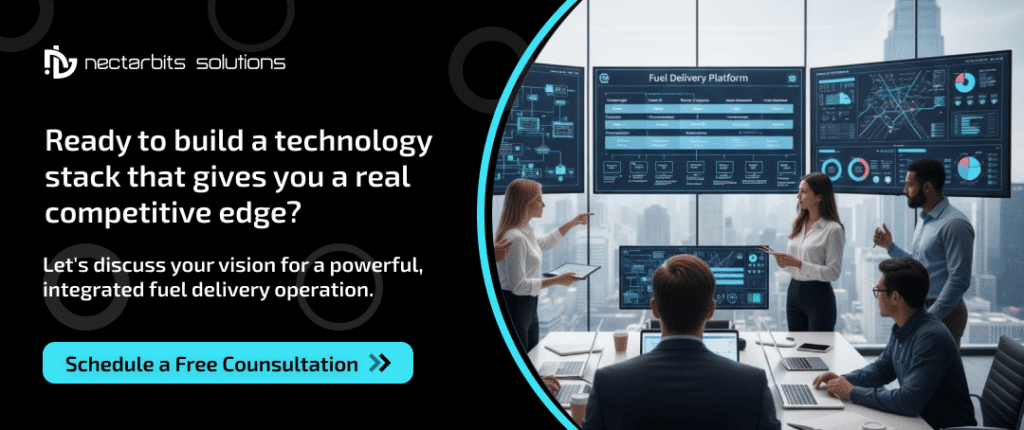
SaaS vs. Custom Build: Choosing Your Path
When building out your tech stack, you face a fundamental choice: subscribe to an off-the-shelf service or build your own.
The Case for Fuel Delivery Software as a Service (SaaS)
SaaS solutions offer a pre-built platform for a monthly or per-delivery fee.
- Pros: Lower initial cost, faster deployment, and no need to manage servers or maintenance.
- Cons: Limited customization to fit your unique workflow, your data resides on a third-party platform, and subscription fees can become substantial as you scale.
A fuel delivery software as a service model can be a good starting point for new businesses testing the market.
The Power of a Custom Fuel Delivery Software Solution
A custom-built solution is designed from the ground up to match your specific business processes.
- Pros: Perfectly tailored to your operations, complete ownership and control of your data, the ability to build unique features that give you a competitive moat, and greater scalability in the long run.
- Cons: Higher upfront investment in time and money.
Investing in a custom fuel delivery software solution is the choice for serious players who view technology not as a cost center, but as a core driver of their business’s value and growth.
| Feature | SaaS Solution | Custom Solution |
| Initial Cost | Low (Subscription-based) | High (Upfront Investment) |
| Deployment Speed | Fast | Slower (Development Time) |
| Customization | Limited / None | Fully Customizable |
| Data Ownership | Vendor-controlled | You Own Your Data |
| Scalabilityg> | Can be limited by plan | Highly Scalable |
| Competitive Edge | Low (Using same tech as others) | High (Unique Features & Workflow) |
| Best For | Startups testing the waters, small operations with standard needs. | Established businesses, startups with unique models, and companies aiming for market leadership. |
The Financial & Operational Impact of an Integrated Stack
Investing in a complete tech stack isn’t just about having fancy software; it’s about measurable ROI. A fully integrated system can transform your P&L sheet.
- Slashing Operational Costs: According to the American Transportation Research Institute, route optimization can reduce fuel consumption and mileage by up to 15%. For a fleet of fuel trucks, this translates to tens of thousands of dollars in annual savings.
- Boosting Revenue & Efficiency: Automated dispatching and optimized routing mean your drivers can complete more deliveries per shift. Dynamic pricing allows you to maximize revenue during peak demand.
- Enhancing Customer Retention: A seamless app experience with reliable tracking and communication can increase customer satisfaction and retention rates by over 25%. Happy customers, especially high-value fleet clients, are less likely to churn.
Unlocking Future Growth: The data collected by your system is a goldmine. Analyzing delivery density can reveal new, profitable service areas. Understanding customer purchasing habits can lead to new service offerings, like fleet maintenance add-ons. You can truly see how this tech stack changes the industry by turning data into strategy.
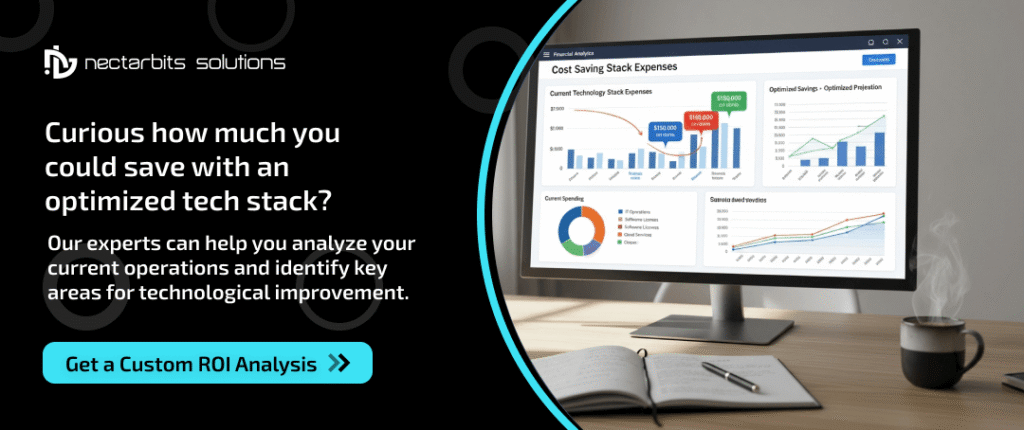
Real-World Application: Learning from Success
The theory is powerful, but the real-world application is what counts. Companies that have embraced a holistic tech stack are pulling away from the competition. They’re able to service massive enterprise fleets with complex fueling schedules, offering service level agreements (SLAs) that competitors using disjointed systems simply can’t match. By integrating telematics, they know exactly how much fuel is in each truck, preventing failed deliveries due to inventory shortages. By using analytics, they can predict demand and position their fleet proactively. To see this in action, you can explore this real-world fleet fueling case study and learn how technology drives success.
Conclusion: Your Tech Stack is Your Business’s DNA
In the modern fuel delivery landscape, the customer app is merely the invitation to the party. The party itself—the seamless execution, the operational efficiency, the safety, and the profitability—is run by the comprehensive fuel delivery technology stack.
It’s the invisible engine that turns a chaotic logistical puzzle into a finely tuned, revenue-generating machine. It’s the central nervous system that connects customer demand to field execution with intelligence and precision. Overlooking the importance of this integrated backend is no longer an option. For businesses aiming not just to survive but to lead the market, your technology stack isn’t just a part of your business; it is the very DNA of your operation.
Read Next:
Looking to dive deeper into the business model itself? Discover whether on-demand fuel delivery has the power to disrupt traditional gas stations for good.
➡️ Can Fuel Delivery Apps Replace Traditional Gas Stations?
FAQs:
1: What is included in a complete fuel delivery technology stack beyond the customer app?
A complete fuel delivery tech stack includes the customer-facing app, driver operations module, admin/dispatch panel, backend cloud infrastructure, telematics, GPS/IoT integrations, payment systems, BI dashboards, and compliance automation. Together, these systems reduce operational costs, increase delivery accuracy, and automate workflows across the business.
2: Do I need a custom fuel delivery software solution, or is SaaS enough for my business?
If you’re launching quickly or operating with standard workflows, SaaS fuel delivery software is a cost-effective starting point. But suppose your business requires custom workflows, enterprise-grade automation, deeper integrations (telematics, ERP, QuickBooks, IoT sensors), or long-term scalability. In that case, a custom fuel delivery software solution is a stronger investment.
3: How do telematics and IoT improve fuel delivery operations?
Telematics and IoT sensors provide real-time visibility into truck location, driver behavior, and onboard fuel inventory. This helps fleets avoid failed deliveries, reduce fuel theft, improve routing efficiency, automate compliance logs, and boost fleet safety. IoT-powered monitoring can also accurately track nozzle usage, pump status, and tank pressure.
4: What backend systems are essential for running a profitable fuel delivery business?
A modern fuel delivery business requires cloud infrastructure (AWS/GCP), a robust database, payment gateway APIs, mapping/route optimization APIs, dynamic pricing engines, CRM, analytics dashboards, and fleet telematics integrations. These backend components ensure reliability, scalability, and cost-efficient operations.

